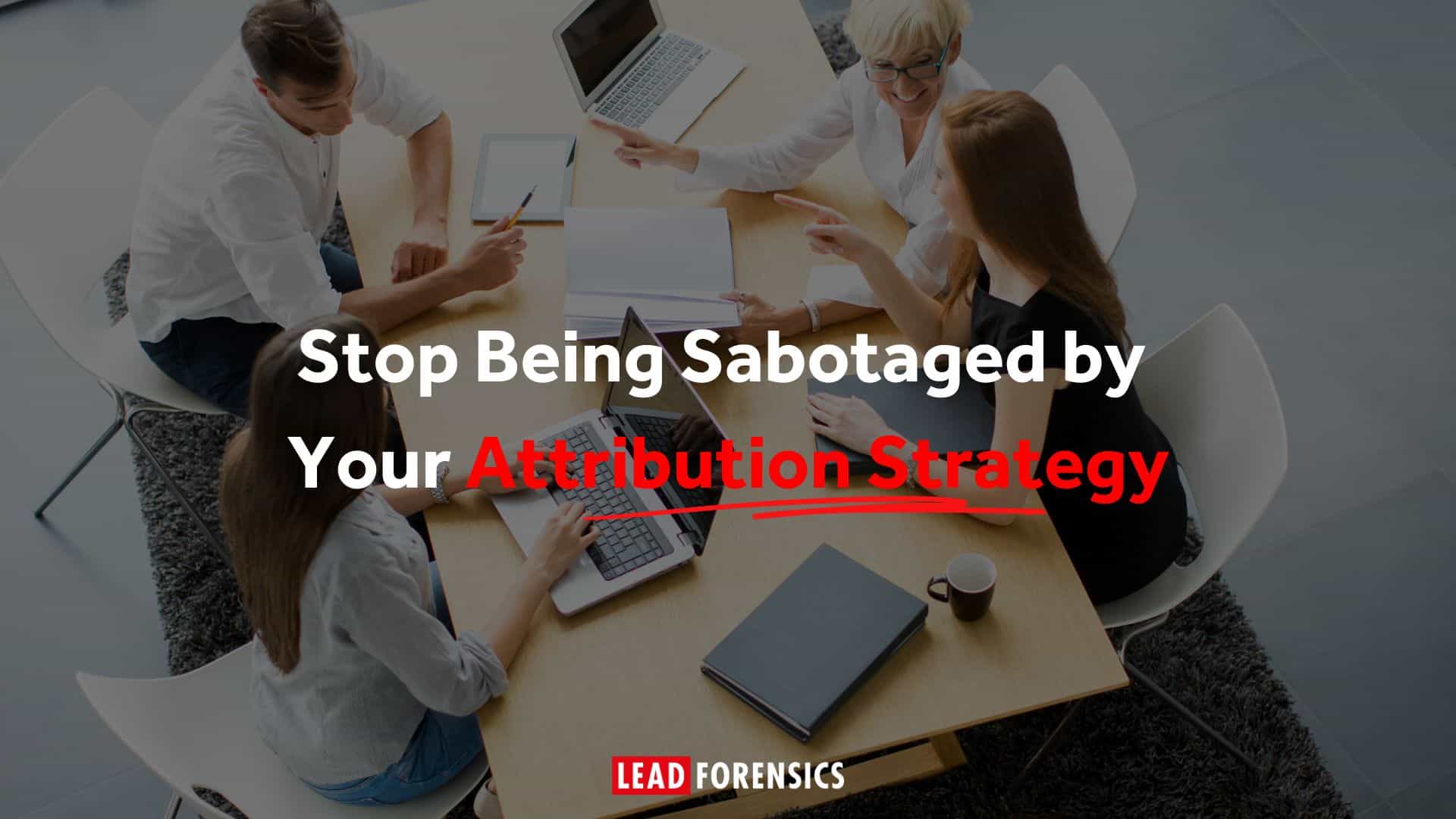Understanding Demand Generation
Demand generation refers to the process of creating and nurturing interest in a product or service. It involves a comprehensive strategy that encompasses marketing and sales efforts aimed at generating demand and driving customer engagement throughout the buying journey. By understanding the various stages of demand generation, businesses can create targeted campaigns that resonate with their target audience and lead to conversions.
At the core of demand generation is the need to attract and capture the attention of potential customers. This can be achieved through various tactics such as content marketing, social media advertising, search engine optimization, and email marketing. By employing these strategies, businesses can increase their visibility and reach a wider audience.
The Importance of Demand Generation
Demand generation is vital to the success of any business. It not only helps attract new leads but also nurtures existing ones, guiding them through the buyer’s journey. By focusing on demand generation, businesses can create a steady stream of qualified leads, increase brand visibility, build customer trust, and ultimately drive revenue growth.
One of the key benefits of demand generation is its ability to create brand awareness. By consistently engaging with potential customers through various marketing channels, businesses can establish themselves as industry leaders and build a strong reputation. This, in turn, leads to increased trust and credibility among customers, making it easier to convert leads into paying customers.
Furthermore, demand generation allows businesses to understand their target audience better. By analyzing customer data and behavior, businesses can gain valuable insights into their preferences, pain points, and buying habits. This information can then be used to create personalized marketing campaigns that resonate with customers and drive conversions.
Key Components of Demand Generation
To effectively generate demand, businesses need to focus on key components that make up the process. These include creating compelling content, implementing strategic marketing campaigns, leveraging various channels, optimizing user experience, and utilizing data and analytics to gain insights and make data-driven decisions.
Compelling content is the foundation of demand generation. By creating high-quality, informative, and engaging content, businesses can capture the attention of their target audience and establish themselves as thought leaders in their industry. This can be done through blog posts, whitepapers, case studies, videos, and other forms of content that provide value to the audience.
Strategic marketing campaigns play a crucial role in demand generation. By identifying the right marketing channels and crafting targeted messages, businesses can reach their target audience effectively. This involves understanding the preferences and behaviors of the target audience and tailoring marketing efforts accordingly.
In addition to content and marketing campaigns, businesses need to leverage various channels to maximize their reach. This includes social media platforms, search engines, email marketing, and other online and offline channels. By utilizing multiple channels, businesses can increase their visibility and engage with potential customers at different touchpoints.
User experience optimization is another important component of demand generation. Businesses need to ensure that their website and other digital assets provide a seamless and enjoyable experience for users. This includes fast loading times, easy navigation, mobile responsiveness, and clear calls-to-action. A positive user experience can significantly impact customer engagement and conversion rates.
Lastly, data and analytics play a crucial role in demand generation. By collecting and analyzing customer data, businesses can gain insights into their target audience’s behavior, preferences, and pain points. This information can then be used to refine marketing strategies, personalize campaigns, and make data-driven decisions that drive better results.
Stage 1: Unawareness
In the first stage of demand generation, potential customers are unaware of their need for a specific product or service. They might encounter a challenge or a requirement, but they have not yet identified the solution. As a business, it is crucial to create awareness and educate your target audience about their pain points and the potential solutions available.
Defining Unawareness in Demand Generation
Unawareness is the stage where leads are unaware of their specific needs or the potential solutions available. This is an opportunity for businesses to position themselves as thought leaders and experts, providing valuable information and insights that help potential customers understand their challenges and identify the need for a solution.
During the unawareness stage, potential customers may be experiencing various difficulties without realizing that there are specific products or services that can address their problems. For example, a small business owner may struggle with managing their inventory effectively, resulting in lost sales and customer dissatisfaction. However, they may not be aware that there are inventory management software solutions available that can streamline their operations and improve their overall business performance.
By understanding the concept of unawareness in demand generation, businesses can tailor their marketing efforts to address this stage effectively. It is essential to communicate the value of your product or service in solving the challenges faced by potential customers, highlighting the benefits and advantages they can gain by adopting your solution.
Strategies to Overcome Unawareness
To overcome unawareness, businesses can utilize content marketing strategies such as blog posts, social media campaigns, and informative videos to educate their audience. By offering valuable content that addresses their pain points and provides relevant information, businesses can build trust and establish credibility with potential customers.
For instance, a software company targeting the unawareness stage can create blog posts that discuss common challenges faced by businesses in their industry and provide insights on how their software can solve those challenges. By sharing real-life examples and success stories, potential customers can relate to the issues and envision how the software can benefit their own operations.
In addition to content marketing, engaging in industry events, webinars, and workshops can also help raise awareness and position your brand as a knowledgeable authority in your field. By sharing your expertise and insights, you can capture the attention of potential customers who are seeking answers to their challenges.
Attending trade shows and conferences allows businesses to connect with a broader audience and showcase their products or services directly. By demonstrating the features and benefits of your solution in person, you can generate interest and curiosity among potential customers, leading them to further explore the need for your product or service.
Furthermore, hosting webinars or workshops provides an interactive platform for potential customers to learn more about their challenges and the available solutions. By facilitating discussions and providing valuable insights, businesses can establish themselves as trusted advisors and build relationships with potential customers.
In conclusion, the unawareness stage of demand generation is an opportunity for businesses to educate and inform potential customers about their challenges and the available solutions. By utilizing content marketing strategies and engaging in industry events, businesses can effectively overcome unawareness and position themselves as thought leaders in their field.
Stage 2: Interest
Once potential customers become aware of their needs and the possible solutions, their interest in exploring further is piqued. In this stage, businesses must focus on capturing and maintaining the interest of their target audience.
The Role of Interest in Demand Generation
Interest is a crucial stage in demand generation as it signifies that potential customers are actively considering the available solutions. Businesses need to capitalize on this interest by providing relevant and engaging content that drives their audience to further explore their offerings.
During the interest stage, businesses have the opportunity to showcase their expertise and build credibility. By offering valuable insights and knowledge, they can position themselves as industry leaders and trusted advisors. This can be done through various channels such as blog posts, webinars, and whitepapers.
Furthermore, businesses can leverage social media platforms to generate interest. By sharing compelling content, engaging with their audience, and participating in industry discussions, they can attract attention and create a buzz around their brand.
Techniques to Spark Interest
One effective technique to spark interest is by creating personalized content that resonates with the target audience. By understanding their pain points and preferences, businesses can tailor their messaging and offer solutions that effectively address their needs.
For instance, conducting market research and customer surveys can provide valuable insights into the interests and preferences of potential customers. This information can then be used to create targeted content that speaks directly to their needs and desires.
Additionally, implementing lead nurturing campaigns through email marketing can help businesses stay top of mind and nurture the interest of potential customers. Providing valuable content, such as case studies, eBooks, and industry reports, can help educate and engage leads throughout their decision-making process.
Another technique to spark interest is by leveraging the power of storytelling. By crafting compelling narratives that highlight the benefits and success stories of their products or services, businesses can captivate their audience and generate curiosity.
In addition, businesses can collaborate with influencers and thought leaders in their industry to further spark interest. By partnering with individuals who have a strong following and credibility, businesses can tap into their audience and gain exposure to a wider customer base.
Furthermore, hosting events such as webinars, workshops, or conferences can be an effective way to generate interest. These events provide a platform for businesses to showcase their expertise, interact with potential customers, and demonstrate the value of their offerings.
In conclusion, the interest stage is a critical phase in the demand generation process. By implementing various techniques such as personalized content, lead nurturing campaigns, storytelling, influencer collaborations, and hosting events, businesses can effectively capture and maintain the interest of their target audience, ultimately driving them towards the next stage of the customer journey.
Stage 3: Evaluation
In the evaluation stage, potential customers actively compare and evaluate different options before making their final decision. This is a critical phase where potential customers consider various factors, such as features, pricing, customer reviews, and testimonials. It is essential for businesses to be transparent and provide comprehensive information that allows potential customers to make a well-informed decision.
Understanding the Evaluation Stage
During the evaluation stage, potential customers delve deep into the available options. They carefully analyze the features and functionalities of different products or services, comparing them to their specific needs and requirements. Price also plays a significant role in this stage, as customers want to ensure they are getting the best value for their money.
Customer reviews and testimonials become crucial during the evaluation stage. Potential customers seek out feedback from others who have already used the product or service. They want to know about the experiences of others, whether positive or negative, to gauge the reliability and effectiveness of the offering.
Additionally, potential customers may consult industry experts, read articles, watch videos, and participate in online forums to gather as much information as possible. They want to make sure they have a comprehensive understanding of the product or service before making a final decision.
Effective Evaluation Techniques in Demand Generation
Businesses employ various techniques to facilitate the evaluation stage and help potential customers make informed decisions.
One effective technique is to provide demo videos or product trials that allow potential customers to experience the solution firsthand. By offering a hands-on experience, businesses can showcase the features and functionalities of their product or service, giving potential customers a taste of what they can expect.
In addition to demos and trials, offering free consultations can also be a valuable tool. This allows potential customers to discuss their specific needs and challenges with experts, who can then provide tailored recommendations and solutions. These consultations not only build trust but also demonstrate the value and expertise of the business.
Collecting and showcasing customer testimonials and reviews can also be influential in the evaluation stage. By highlighting positive experiences from satisfied customers, businesses can instill confidence in potential buyers and differentiate themselves from competitors. Potential customers are more likely to trust the opinions of others who have already benefited from the product or service.
Furthermore, businesses can leverage case studies and success stories to demonstrate real-world examples of how their product or service has helped other customers achieve their goals. These stories provide tangible evidence of the value and effectiveness of the offering, further aiding potential customers in their evaluation process.
Overall, the evaluation stage is a crucial part of the customer journey. Businesses must provide the necessary resources and information to help potential customers make an informed choice. By employing effective evaluation techniques, businesses can increase their chances of converting potential customers into loyal, satisfied customers.
Stage 4: Purchase
In the final stage of demand generation, potential customers make the decision to purchase the product or service. Businesses need to ensure a seamless transition from evaluation to purchase.
The Final Stage: Purchase
The purchase stage is the culmination of the demand generation process. It is the goal of businesses to optimize this stage to convert potential customers into paying customers. This can be achieved by reducing friction in the purchasing process, providing a seamless user experience, and offering incentives or promotions that encourage conversions.
Ensuring a Smooth Transition to Purchase
To ensure a smooth transition to purchase, businesses should focus on optimizing their website for easy navigation and streamlined checkout processes. Offering multiple payment options, providing clear pricing information, and displaying trust indicators such as secure payment icons can help instill confidence in potential buyers.
Additionally, implementing remarketing campaigns targeted at potential customers who have shown interest but have not yet made a purchase can help ensure that no opportunities are missed.
By understanding and effectively navigating the four stages of demand generation, businesses can drive customer engagement, generate qualified leads, and ultimately boost their overall success. By implementing targeted strategies, businesses can create awareness, capture interest, facilitate evaluation, and smoothly guide potential customers towards making a purchase.










